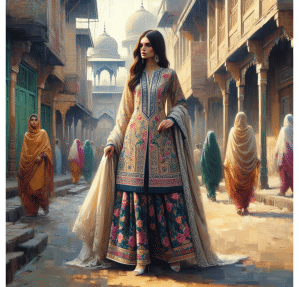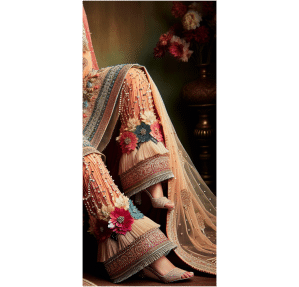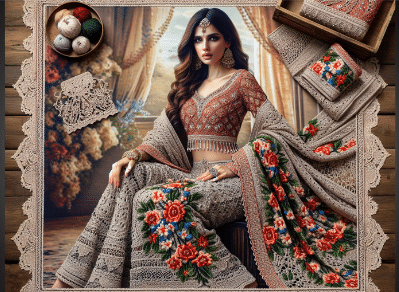Sharara For Women Collection
“Discover Your Personal Style: Apna Apna Style Brings You the Best in Beauty and Fashion”


















Sharara is believed to have originated in Northern India, particularly in Lucknow, during the era of the Mughal Empire. However, it is also said to have influences from Islamic and Persian cultures. It was initially worn by Muslim women, particularly by the royal ladies. Over time, it evolved and became popular among women of all backgrounds and religions in India and Pakistan. Today, this style is considered a traditional and universal garment that can be styled in many ways, making it a popular choice for weddings, parties, and other special occasions.
Traditional Style – a classic style with a long flowing skirt like pants and a fitted top, often made with rich fabrics and intricate embroidery.
Anarkali Style – a fusion of the Sharara and Anarkali styles, with flared skirt-like pants and a long tunic top.
Jacket Sharara – a contemporary style with a short jacket worn over a fitted top and flared skirt-like pants.
Indo-Western Style is a modern take on the traditional Sharara, featuring fusion designs combining South Asian and Western fashion elements.
Palazzo Style – a relaxed and comfortable style with wide-legged palazzo pants and a fitted top.
Pakistani Style – a popular style in Pakistan featuring flared skirt-like pants with a lot of volume and a shorter top.
Bridal Sharara – a luxurious and ornate style with heavy embellishments, perfect for brides or special occasions.
Cigarette Style – a modern and chic style with fitted pants that tapers towards the ankle and a flared top.
Double-Layered Sharara – a unique style with double-layered skirt-like pants, giving the illusion of two skirts. The top is usually sheer, while the bottom is a solid fabric.
Dhoti Sharara is a trendy and contemporary style with draped pants resembling a dhoti.